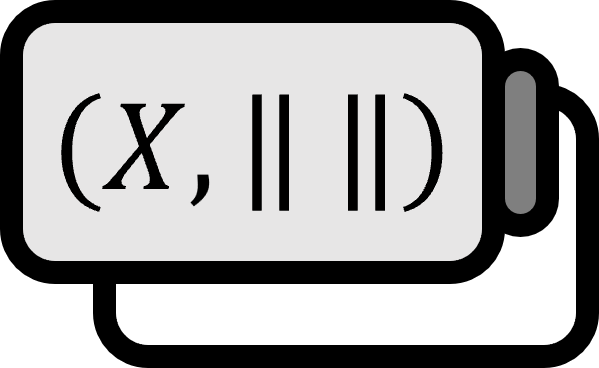Every Finite-Dimensional Normed Space Has a Basis
Theorem 1
Every finite-dimensional norm space has a basis.
Description
It might be unfamiliar to announce the existence of a basis not under specific conditions, but actually, the definition of a basis never stated that every vector space has a basis. Depending on how one defines finite dimensionality, it can also be a fact so obvious that it requires no separate proof.
Proof
Strategy: Use the fact that the space is finite-dimensional to explicitly construct a basis.
$(X, | \cdot | )$ is finite-dimensional, so there exists $\text{span} \left\{ x_{1} , \dots , x_{n} \right\} = X$ that satisfies $\left\{x_{1} , \dots , x_{n} \right\}$. Let’s say $y_{1} : = x_{1}$. If $x_{2} \in \text{span} \left\{ y_{1} \right\}$ then consider $x_{3}$. If $x_{2} \notin \text{span} \left\{ y_{1} \right\}$, let $y_{2} := x_{2}$. If $x_{3} \in \text{span} \left\{ y_{1}, y_{2} \right\}$, then consider $x_{4}$. If $x_{3} \notin \text{span} \left\{ y_{1}, y_{2} \right\}$, let $y_{3} := x_{3}$. In this way, by defining $M = \left\{ y_{1} , \dots , y_{k} \right\}$, for $1 \le j \le k$
$$ y_{j} \notin \text{span} \left\{ y_{1} , \dots , y_{j-1} \right\} $$
If we assume that $M$ is not linearly independent, for some $\lambda_{j} \ne 0$s
$$ \lambda_{1} y_{1} + \dots + \lambda_{k} y_{k} = 0 $$
Among such $j$s, let the largest $j$ be $j_{0}$.
$$ y_{j_{0}} = - {{1} \over { \lambda_{j_{0}} }} \sum_{j < j_{0}} \lambda_{j} y_{j} - {{1} \over { \lambda_{j_{0}} }} \sum_{j > j_{0}} \lambda_{j} y_{j} = - {{1} \over { \lambda_{j_{0}} }} \sum_{j < j_{0}} \lambda_{j} y_{j} $$
Therefore, $\displaystyle y_{j_{0}} = - {{1} \over { \lambda_{j_{0}} }} \sum_{j < j_{0}} \lambda_{j} y_{j} \in \text{span} \left\{ y_{1} , \dots , y_{j_{0}-1} \right\}$, which is a contradiction. Since $M \subset \left\{ x_{1} , \dots , x_{n} \right\}$ is linearly independent and satisfies $\text{span} M = X$, $M$ becomes a basis of $X$.
■
By examining the proof process, it can be seen that $\left\{ x_{1} , \dots , x_{n} \right\}$ comfortably generates $X$. By discarding what hinders being linearly independent and taking only $M$, it explicitly shows that it is a basis.
Kreyszig. (1989). Introductory Functional Analysis with Applications: p55. ↩︎
